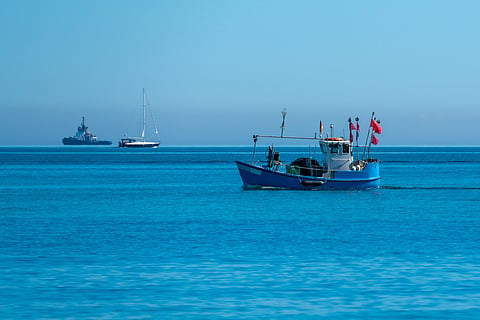

Fishing boat on the Baltic Sea.
Photo: Ina Hensel / Adobe Stock.
EU fisheries ministers have set the total allowable catches (TACs) and national quotas for next year in the Baltic Sea, which the EU Council said are broadly in line with the scientific advice issued by the International Council for the Exploration of the Sea (ICES). The decision determines the maximum quantities that each member state may catch for each fish stock.
According to the Council, ministers sought to balance environmental and socio-economic priorities by maintaining sustainable fishing levels while supporting the livelihoods of coastal communities.
“Today’s agreement is about securing our shared future. With it we strike a balance between the need to ensure sustainable fishing stock, protect our marine ecosystems, and safeguard the long-term viability of our fishing communities,” said Jacob Jensen, Danish Minister for Food, Agriculture and Fisheries, via a news release.
However, concerns have been raised that the EU Council's decision does not go far enough to enable recovery of fish stocks in what is widely considered one of the most polluted seas on the planet.
The EU and other Baltic Sea stakeholders have been sounding the alarm over what was described in August as the "dire situation" of several fisheries in the Baltic, when the EU set out its proposal for fishing opportunities next year, with sharp reductions proposed for catches of several stocks.
“I am worried about the poor state of the Baltic Sea fish stocks and the impact that this has on local fishers. Too many fish stocks are close to collapsing and the ecosystem is worsening," European Fisheries Commissioner Costas Kadis said at the time. Kadis is advocating for an ecosystem-based approach to fisheries management in the Baltic - but this requires significant cooperation between Baltic states.
Announcing the EU Council decision this week, the bloc said it remains committed to a long-term approach to sustainability in the region’s fisheries. The European Commission has also described the Baltic as an urgent priority under its Ocean Pact strategy.
While the EU Council followed the proposals made by the European Commission on some apsects, the Commission has raised concerns over the TACS established for Bothnian herring and central herring, in addition to continued targeted commercial fisheries for western Baltic herring and recreational fisheries for main basin salmon.
"The Commission is concerned that some elements of the agreement are less likely to contribute to the rebuilding of the fisheries that rely on the recovery of certain stocks for their economic activities than the Commission proposal," the European Commission said, in a separate press release.
"Overall, the dire environmental state of the Baltic Sea leads to the pressing need to fully implement the EU legislation at all levels in an effective manner and to allow a rebuilding trajectory. The commitment by the Commission and the Baltic Member States to ask for a specific scientific advice on rebuilding trajectories will start a systematic approach in this direction," it added.
In 2026, fishing opportunities for sprat will increase by 45% in line with ICES recommendations, while the catch limit for central Baltic herring will rise by 15%. The EU Council also endorsed a three-month spawning closure for this stock.
For the Gulf of Riga herring, the TAC has been reduced by 17% compared with 2025. Catch limits for Western Baltic herring remain unchanged, with no directed fisheries permitted, although small-scale fishers will continue to benefit from a derogation.
In the Bothnian Sea, herring catches have been reduced by 40% to prevent the stock from falling below sustainable levels. A preliminary TAC will apply until 31 October 2025, along with remedial measures. The Council noted that this stock has declined to one of its lowest recorded levels and agreed to a three-month spawning closure.
Meanwhile, fishing opportunities for salmon in the Gulf of Finland will increase slightly by 1%, but those for salmon in the Baltic main basin will decrease by 27%. The Council agreed to maintain restrictions on the summer coastal fishery and on recreational fishing for reared salmon only.
Both Eastern and Western Baltic cod stocks remain in poor condition. As a result, the Council maintained existing TACs that only allow for by-catches, with no directed fishing permitted. Recreational cod fishing will continue to be prohibited across the entire Baltic Sea.
For plaice, catch limits have been reduced by 3% following ICES advice.
The agreement will be formally adopted at a forthcoming Council meeting once the text has been finalised in all EU languages.
The EU Council is the sole EU body with authority to set annual fishing limits, based on proposals from the European Commission and scientific advice. Announcing its decision, the Council said new quotas are intended to align with the objectives of the Common Fisheries Policy and the multiannual plan for Baltic Sea stocks.
The regional fisheries forum BALTFISH, currently chaired by Sweden, also contributed to the negotiations.
The Baltic Sea continues to face significant environmental pressures including biodiversity loss, pollution and the effects of climate change. At the Our Baltic Ministerial Conference in Stockholm earlier this month, a variety of stakeholders urged stronger collective efforts to tackle the region’s ongoing environmental and fisheries crisis, with European fishing industry association Europêche calling for a binding Baltic Sea plan.
